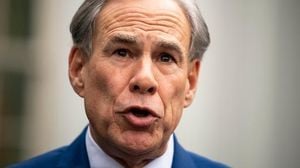Amid escalating global trade tensions, India finds itself at the center of a new economic storm. The United States, under the leadership of President Donald Trump, has recently imposed a 25% tariff on Indian goods, a move directly linked to India's continued purchases of Russian oil. But that's not all. In a parallel development, the Trump administration has also slapped a sweeping 100% tariff on imported computer chips—an action that has sent ripples through the global technology and manufacturing sectors.
At the Business Today India@100 Summit on August 9, 2025, Union Minister Piyush Goyal struck a resolute tone in response to these measures. According to India Today, Goyal declared, "India will not bow down to anybody," underscoring the nation's economic strength and self-confidence. He highlighted India's 6.5% annual growth rate, calling it the fastest among large economies, and pointed to robust fundamentals: strong currency, healthy foreign exchange reserves, and low inflation compared to other emerging markets.
Goyal was quick to dismiss any narrative of "deglobalisation." Instead, he argued that what the world is witnessing is a restructuring of trade routes and partnerships. "I am quite confident that India will do more exports this year than last year," he stated, signaling optimism despite mounting trade barriers. Measures are already in place, he added, to counteract these hurdles and maintain export momentum.
This bullish sentiment is echoed in a recent white paper from the PHD Chamber of Commerce and Industry (PHDCCI). The chamber’s analysis, released after the US announced its new tariff on August 7, 2025, concludes that the 25% levy will affect about $8.1 billion worth of Indian exports. While the figure sounds substantial, PHDCCI President Hemant Jain told reporters, "India continues to be the fastest-growing economy among major global players. Our analysis shows that the US tariff will have a negligible effect on our GDP and a limited impact on exports." In fact, the chamber estimates that India's total global merchandise exports will be hit by just 1.87%, and the overall GDP impact is forecast at a mere 0.19%.
Yet, not all sectors will escape unscathed. The PHDCCI white paper highlights that engineering goods may see an export loss of around $1.8 billion, and electronics could be reduced by $1.4 billion. Pharmaceuticals, gems and jewelry, and ready-made garments are also expected to feel the pinch. The chamber recommends a four-pronged strategy: enhancing market penetration in the US, co-developing products with American buyers, redirecting exports to new markets like the EU and Asia, and diversifying manufacturing and service capabilities, including setting up joint ventures in the United States.
For Goyal, India's resilience is reinforced by the upcoming free trade agreement with the EFTA bloc, which will take effect on October 1, 2025. He announced that EFTA nations have committed to investing $100 billion in India, generating 1 million direct jobs and around 5 million total jobs. "From October 1, the EFTA agreement is going to come into effect and the benefits will be visible," he said. The minister also listed ongoing negotiations or concluded trade agreements with countries including the UAE, Mauritius, Australia, the UK, the EU, Chile, Peru, New Zealand, and the US, painting a picture of an economy actively seeking new global partnerships.
However, the global trade landscape is growing more complex—especially for technology and manufacturing. In August, President Trump imposed a 100% tariff on imported computer chips, with exceptions for companies that commit to building chips in the US. According to USA TODAY, this measure affects a vast array of products, from smartphones and laptops to cars and video game consoles. While the details remain murky—particularly which Harmonized System codes are covered—experts warn that the tariff could force companies to either reduce production or raise prices.
John Mitchell, president of the Global Electronics Association, told USA TODAY that more than 60% of his group’s members have already reported increased costs and delayed production due to previous tariffs. He expects the new tariffs will push up the prices of essential goods like laptops, appliances, vehicles, and medical devices. Zac Rogers, associate professor of operations and supply chain management, noted, "Almost all industries need chips, with at least 100 chips in people's daily use," emphasizing the far-reaching impact of the new policy.
The United States, for its part, produces about $58 billion in semiconductors annually but imports roughly $60 billion—especially low-end chips from countries like Malaysia. Jason Miller, a supply chain expert at Michigan State University, explained that while the US excels in high-end chip production, it lacks cost competitiveness for low-end, generic chips. The CHIPS and Science Act of 2022, signed by then-President Joe Biden, aims to boost domestic manufacturing, but experts like Rogers caution that expanding capacity is a slow and challenging process.
For the automotive sector, the pain is especially acute. Ivan Drury, director of analysis at Edmunds, described the situation as "something like a thousand cuts to die from." With automakers already facing a 25% automotive tariff, the new chip tariff is "yet another cut." General Motors reported over $1 billion in tariff costs in the second quarter of 2023, while Stellantis projects a $1.7 billion tariff bill for this year. Stellantis has even suspended production at some plants to avoid paying tariffs, contributing to a 6% year-on-year decline in car shipments in the second quarter of 2025.
Consumers, too, may face higher costs—especially in the used car market. Drury warned that repair shops are more likely to pass increased chip costs directly to customers, which could also drive up insurance premiums. "At some point something will break" in the value chain or in the consumer's pocket, he said, describing this as a "snowball effect." While experts do not expect a semiconductor shortage on the scale of the COVID-19 pandemic, Zac Rogers cautioned that, "the problem will be having to pay more for them," and shortages could emerge as companies cut production in response to higher import costs.
Despite these headwinds, India's economic outlook remains robust. The IMF, in its July 2025 World Economic Outlook, forecasted India's GDP growth at 6.4% for 2025-26, the highest among major economies. The electronics sector, in particular, has posted a 50.7% compound annual growth rate between 2020 and 2025, according to the Ministry of Electronics and Information Technology. Agri-food exports are also booming, reflecting the country's growing competitiveness in global value chains.
As Piyush Goyal summed up at the summit, "India today is stronger, more respected, led by a tall leader in Prime Minister Narendra Modi." While challenges remain, the combination of resilient fundamentals, strategic policy responses, and global partnerships may well help India weather this latest storm in global trade.



